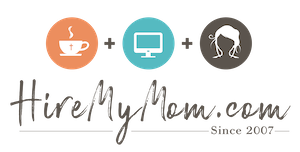4 Keys to a Glowing LinkedIn Personal Summary
LinkedIn is not only important for a job search, it’s important to let your colleagues and future employers know your past experience, results, and personal attributes.
We’ve all seen the Summary section at the top of our profiles, which can be a little intimidating. Since it’s a free form block of space, we often wonder what to put there. Is it a written out resume? A list of skills? Read along for tips to maximize your personal Summary for success!
Make it readable
Although you have a lot of space to create your Summary, don’t put all your text in one place. For starters, use bullets and numerous paragraphs to break up the space and each topic.
When a potential employer comes to your profile, they need to know what you do in a succinct, well organized manner. Keep each set of information together – for example, qualities and attributes in one paragraph, general applicable results in another, followed by your call to action – all in separate spaces.
Use the space
Never leave your personal Summary blank! I repeat, never leave it blank. It’s better to have a small Summary of your contributions versus leaving it blank. The rest of your LinkedIn profile is basically laid out like a resume, whereas this is the ideal space to show some personality and writing skills.
This is the space to really show yourself – use the space as you need, but don’t feel the need to go on and on just to fill the maximum characters either.
Call to action
It’s important to let your potential employer or potential clients know what to do and how to contact you.
Do you have a link to your online profile? Do you have a business email address or phone number? A website? Include this information in your call to action. Whatever makes the most sense for your purpose on LinkedIn, do that to ensure that the right people can contact you directly.
Answer the question: What do I want my reader to do after reading this? Create your call to action accordingly!
What’s important?
It’s important to tell a story via your personal Summary. How did you get started in your chosen field or industry? The less it reads like a cover letter or resume and more like a personal story, the more intriguing you become to readers.
Include the compelling story of how you got to this point, as well as any applicable accomplishments – especially those that can be quantified. Impressive results and hard data are always ideal, but if you can’t do that, include a short, 1-2 sentence testimonial or proof of your past works.
